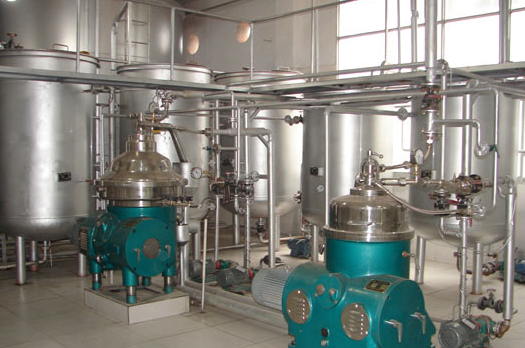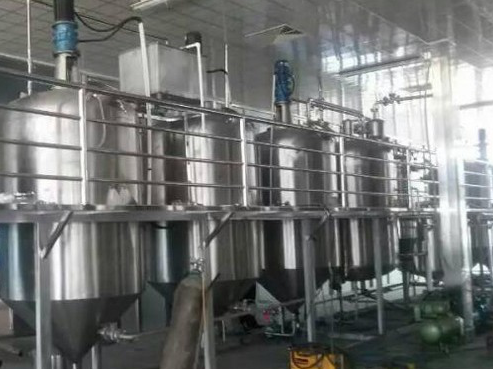Oil degumming is a step in the oil refining process. The oil degumming process is a process that uses physical, chemical or physical chemical methods to remove desoluble impurities in the crude oil. Grease degumming generally adopts the operation of hydration degumming.

The principle of oil hydration and degumming:
Grease hydration and degumming is to use the hydrophilicity of peptic impurities such as phospholipids. Add the required amount of hot water or dilute alkali, salt, phosphoric acid and other electrolyte solutions to the hot crude oil under stirring to make the peptic impurities absorb water A method of degumming oil by coagulation and sedimentation. In the process of hydration and degumming, the main substances that can be aggregated and settled are phospholipids, as well as proteins combined with phospholipids, glycosyl diglycerides, mucus and trace metal ions.

Factors affecting oil hydration and degumming:
1. Add water
The role of water: wetting the phospholipid molecule, making it from the internal salt form to the hydration form; hydrating the phospholipid, changing the critical temperature of aggregation; making other hydrophilic colloids absorb water to change the degree of gelation; promoting the aggregation of colloidal particles Flocculation. The amount of water added for oil hydration and degumming is about 3 to 3.5 times the phospholipid content.
2. Operating temperature
The temperature at which the colloidal dispersion in crude oil starts to agglomerate under the influence of external conditions is called the critical temperature of the colloidal dispersion phase. The oil hydration and degumming temperature generally corresponds to the critical temperature. In order to facilitate flocculation, the operating temperature can be slightly higher than the critical temperature.
3. Mixing intensity and action time
4. Electrolyte
The main functions of electrolytes in the process of grease degumming are as follows: one is to neutralize the surface charge of the particles in the dispersed phase of the colloid, to eliminate (or reduce) the potential or hydration of the particles, and to promote the aggregation of the gel points; the other is to make calcium and magnesium compound salts. Phospholipids are transformed into hydrophilic phospholipids; the third is that the aluminum hydroxide hydrolyzed from alum and the produced fatty acid aluminum have a strong adsorption capacity. In addition to enveloping colloidal particles, it also has the effect of adsorbing pigments and other impurities in the oil; the fourth is passivation It also removes the trace metal ions combined with the colloidal dispersion, which is beneficial to the refined oil smell and accelerates the oxidation stability; the fifth is to promote the compact flocculation of the colloidal particles, reduce the oil content of the floccules, accelerate the sedimentation rate, and accelerate the hydration yield .
5. Other factors
The factors that affect oil hydration and degumming also include oil inlet flow, sedimentation and separation temperature, etc. These factors will also affect the effect of grease degumming.
Copyright © Henan Zhongxing Grain And Oil Machinery Co.,Ltd. All Rights Reserved. Powered by MetInfo